Interactive Apps
We currently offer JupyterLab, RStudio Server, Code Server, RELION, and Shiny App access on both the Discovery and Endeavour clusters.
Other applications, such as Stata, Mathematica, and MATLAB, are available on the Traveler Desktop under the Interactive Apps dropdown.
1 Using the Traveler Desktop
To start a Traveler Desktop session in OnDemand, select the application from the Interactive App dropdown menu at the top of the OnDemand dashboard.
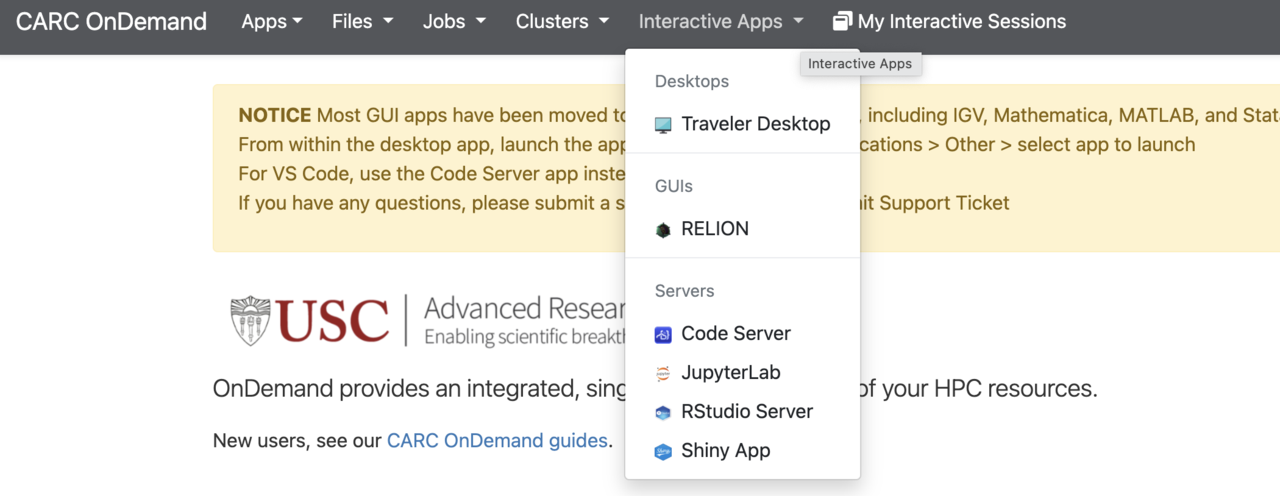
Once you select an application, the session creation page will appear.
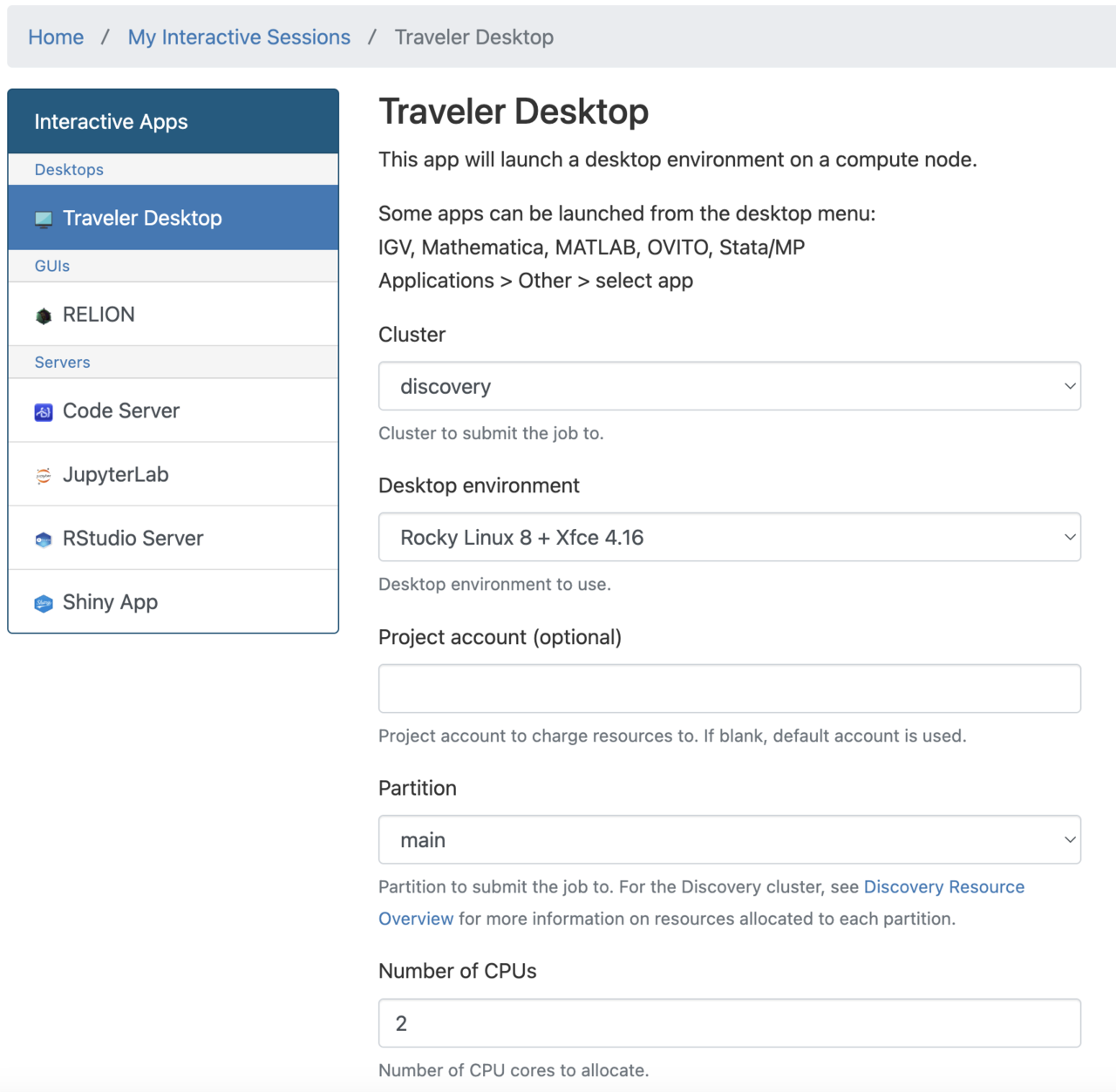
Customize your interactive session using the following form fields:
- Cluster: Select either the general-use Discovery cluster or the Endeavour condo cluster. You must belong to a project with access to the Endeavour cluster in order to select this cluster; otherwise, you will receive an
sbatcherror (Invalid account or account/partition combination specified). - Desktop environment: There is only one environment available at this time.
- Project account Optional: The project account to charge resources to. The account should be of the form <PI_name>_<project_ID>.
- Partition: The cluster partition to submit the job to. See the Discovery Resource Overview for more information on the different partitions on Discovery. Depending on the partition you choose, you may not see all of the form fields in this list.
- Number of CPUs: Number of CPU cores to allocate for your session. The default is set to 2. The maximum number of cores available depends on the partition selected above.
- Memory (GB): Amount of memory to allocate. If left blank, a default of 2 GB of memory per CPU core will be allocated.
- Number of hours: Amount of time to allocate to your session. Maximum number of hours varies depending on cluster and partition selected. When the time allocated runs out, your session will end.
- Constraint: Node features to request (currently, CPU model).
If you would like to receive an email notification when your session starts, check the corresponding checkbox at the end of the form. Otherwise, click Launch to launch your session:

This will schedule your session in the Slurm queue. You will be taken to the My Interactive Sessions page, where your session will be highlighted in blue with a status of “Queued”:
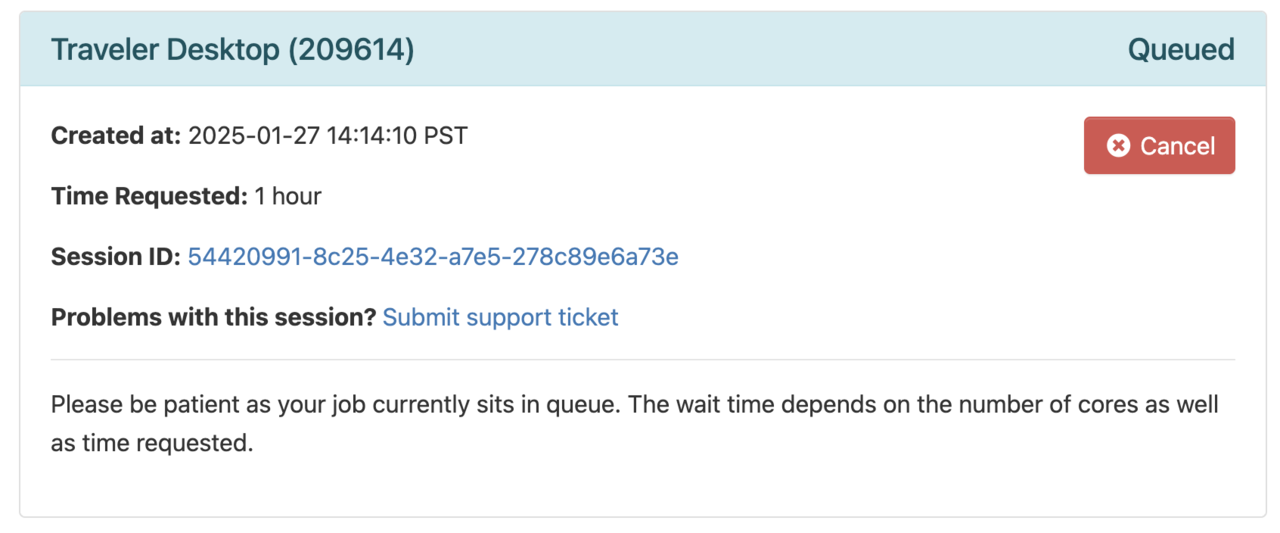
When your session is ready to use, you will see it highlighted in green with a status of “Running”. Select Launch Traveler Desktop in the bottom left of the box:
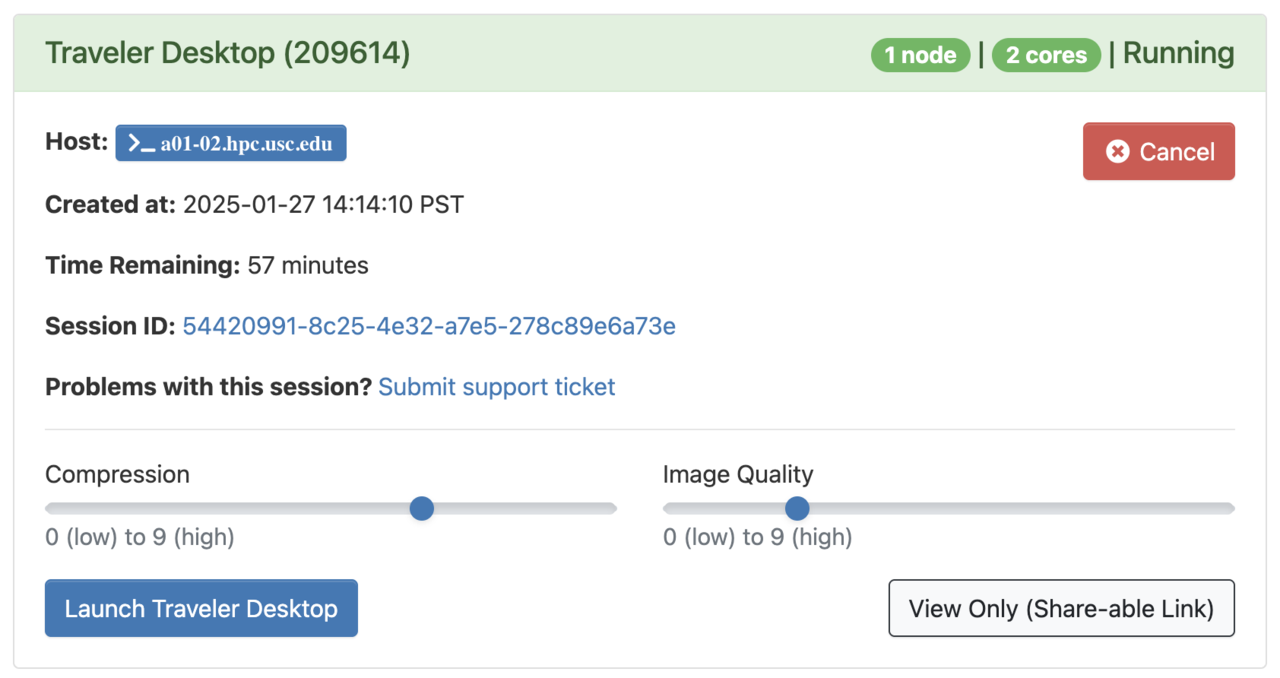
For the best image resolution, set Compression to 1 and Image Quality to 9 before launching.
A new window will open up with the Traveler Desktop. Select the magnifying glass on the bottom to open the Application Finder:
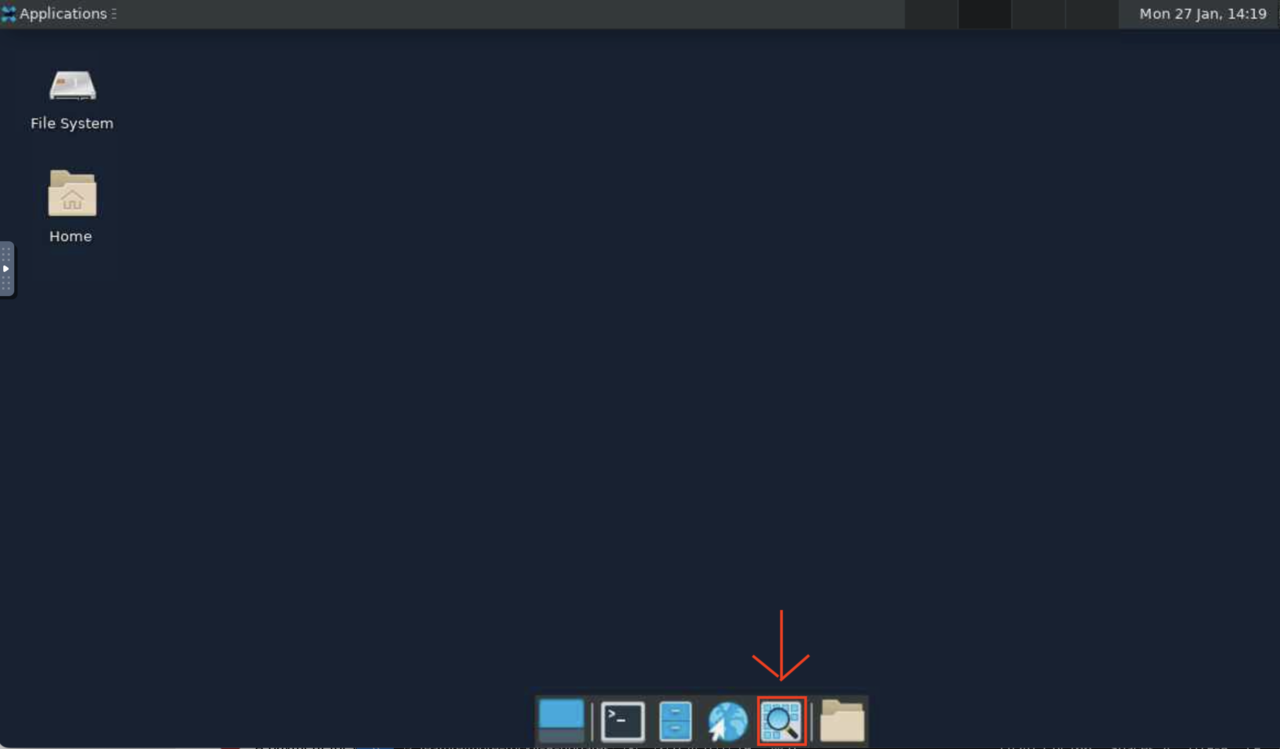
Choose the application you would like to run. In this case, we’ll choose MATLAB. Select the application to highlight it and then select Launch:
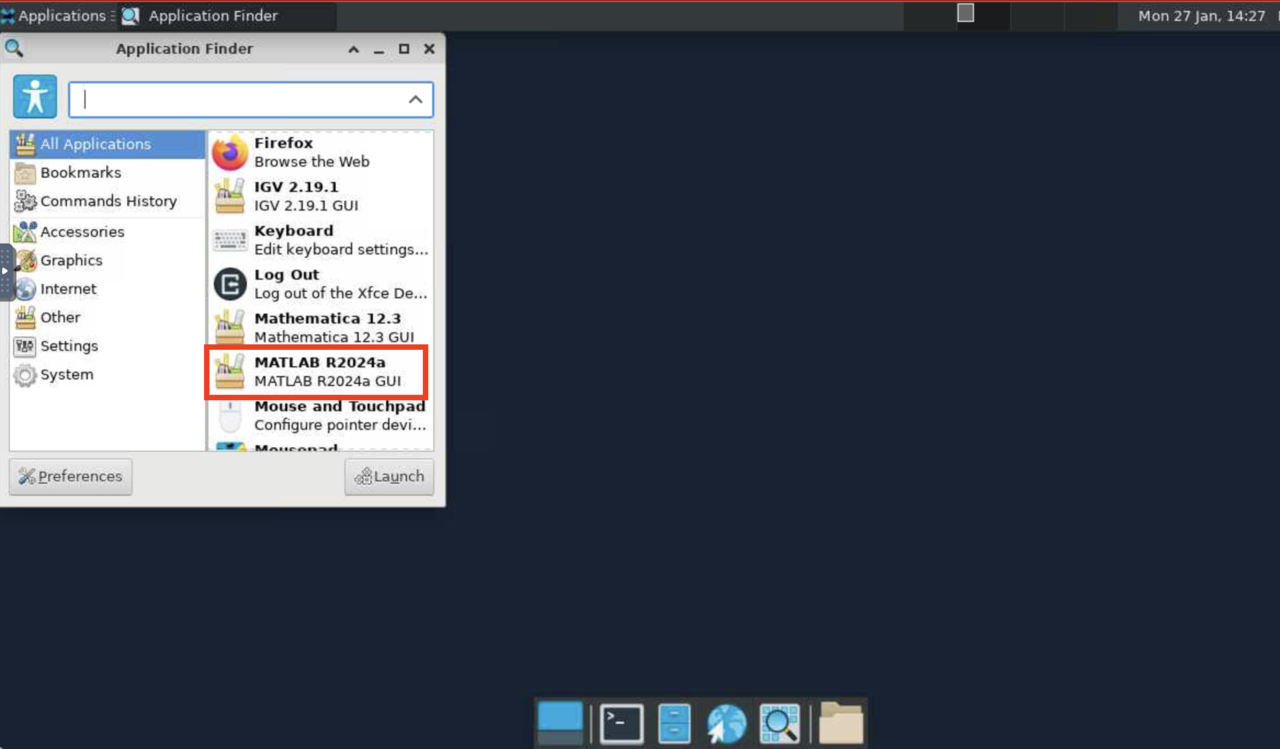
MATLAB will launch in a window within the Traveler Desktop. From here, you can access your directories, create new scripts, etc:
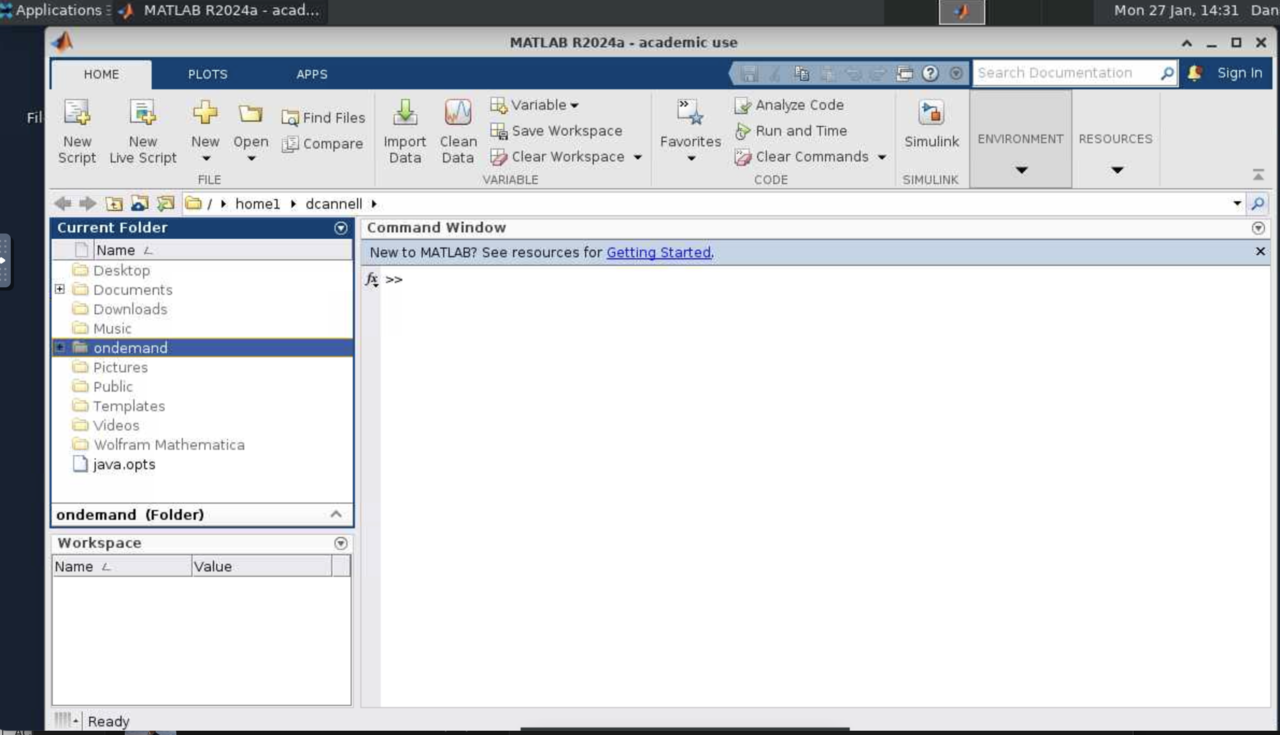
2 Other interactive app sessions
Starting an interactive session with Code Server, JupyterLab, RStudio, or Shiny App is similar to initiating the Traveler Desktop. One noticeable difference is with RStudio.
RStudio provides a username and password that you will need when you launch the application:
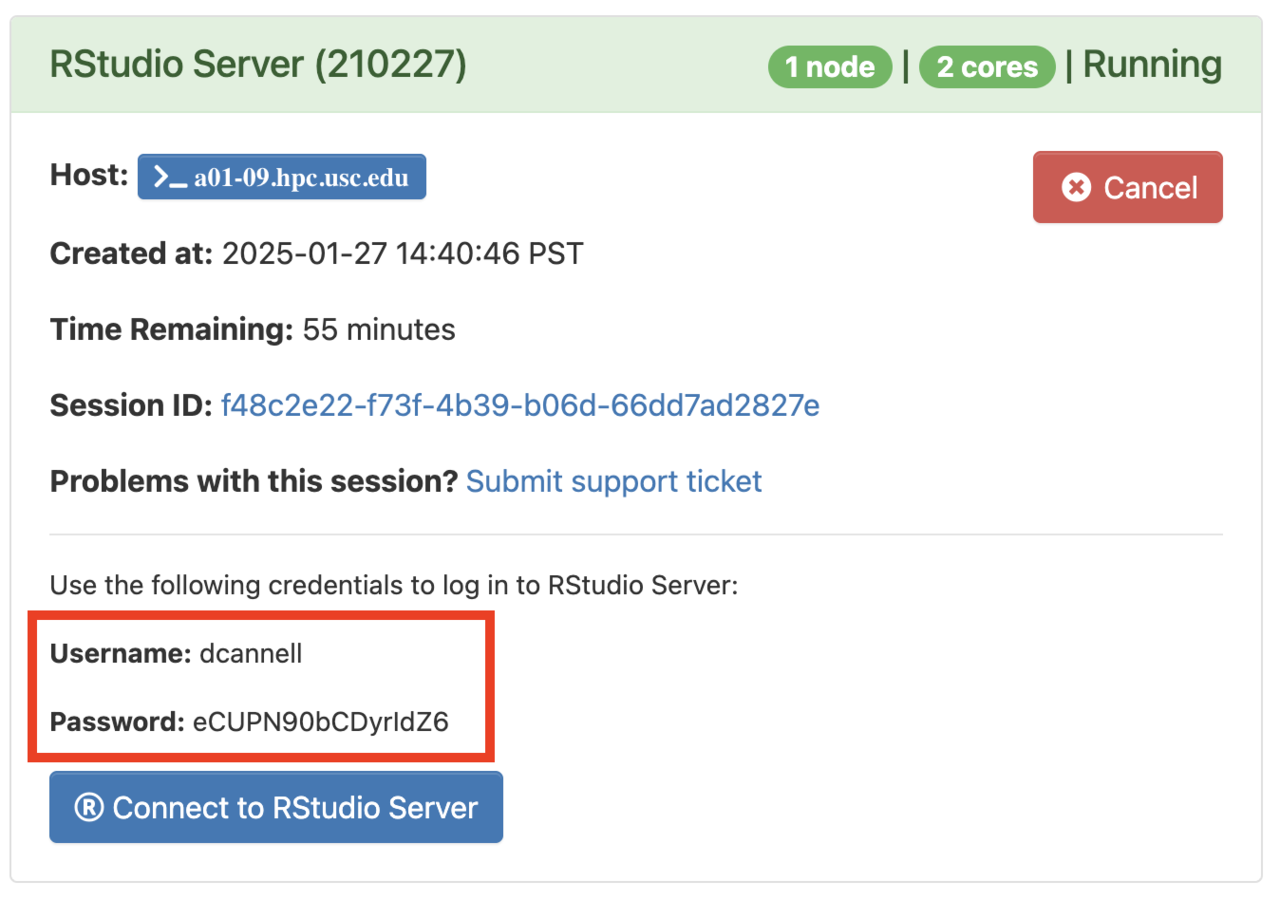
When you select Connect to RStudio Server, a new tab will open. Enter the provided credentials to log in to RStudio:
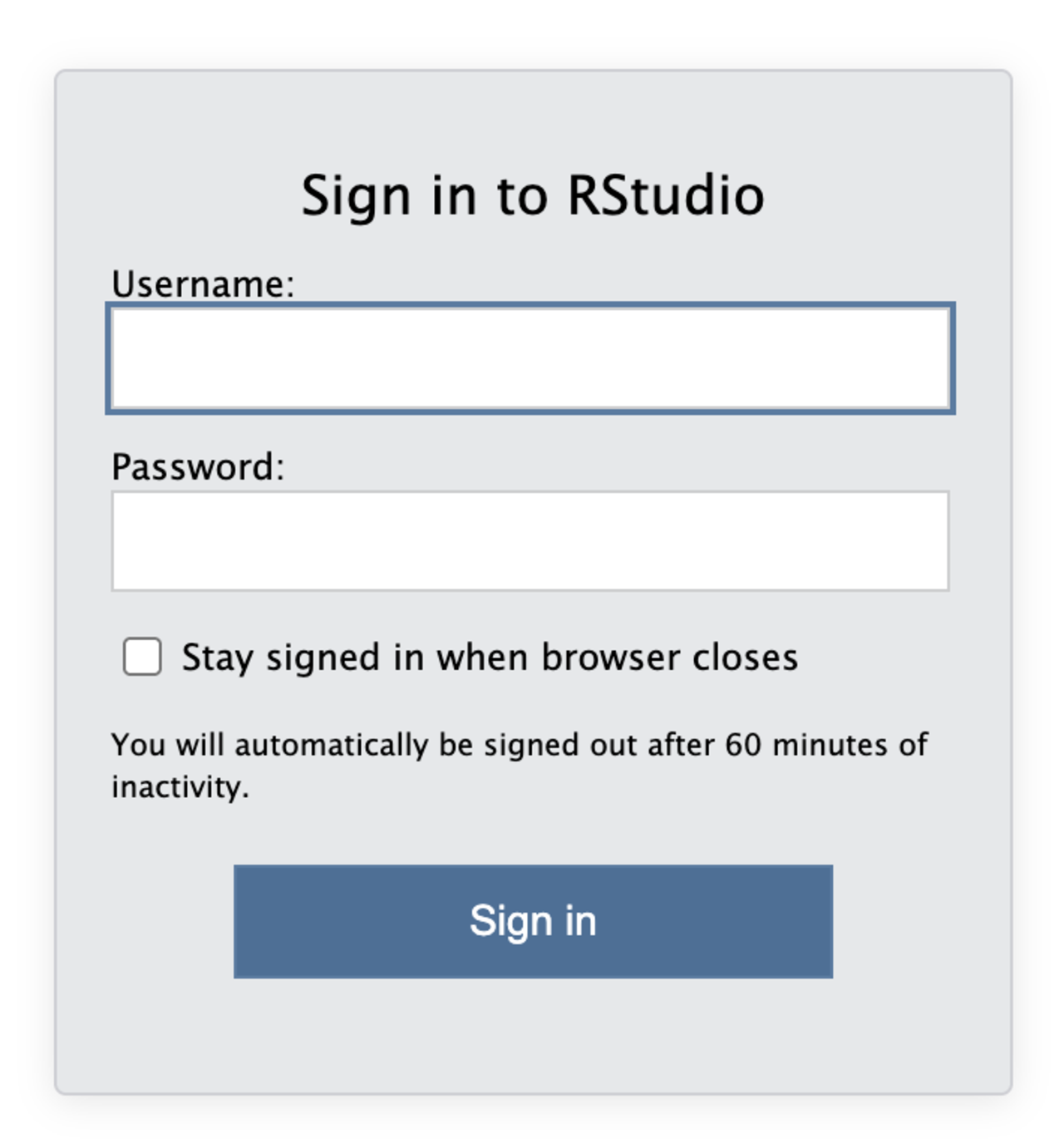
2.1 Managing your interactive sessions
You can view all of your OnDemand interactive sessions by selecting My Interactive Sessions in the main OnDemand menu. Each session will include the following information:
- Host: Clicking the host will open a shell with access to the node that your session is running on.
- Created at: The date and time the session was created.
- Time Remaining: The time remaining for your session, based on the number of hours you specified when creating the session.
- Session ID: Clicking the session ID will open the file directory for the session, which contains configuration files, logs, and scripts for your app session.
If you no longer need an interactive session, you can delete it using the red Delete button.